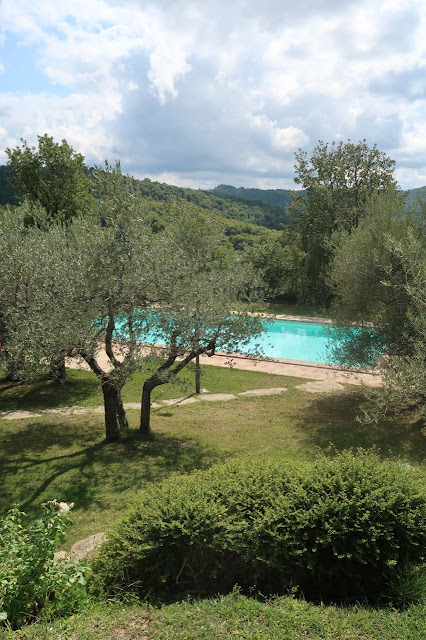Founded by the Umbri tribes, the city has been given many different names throughout the centuries — it was called Tifernum Tiberinum by the Romans, Castrum Felicitates or the 'Town of Happiness' in the Middle Ages and now Città di Castello. Surrounded by majestic 16th century walls, the città is rich in history and art and has a small historic centre that is a delight to explore. Much of the artistic heritage in the town dates from the rule of the Vitelli in the 15th century, with the palaces and churches having a distinctive Tuscan influence, a result of the close bonds between the Vitelli family and the Medici of Florence. Not much is left from Roman days, but there are many outstanding medieval buildings including the Palazzo Comunale, built in the 14th century in the Gothic style and the adjacent Torre Comunale. The Cathedral, dedicated to the two saints Florido and Amanzio, has ancient 11th century origins that has been so re-worked that its appearance is a bit of a jumble. The upper part of the facade is from the Renaissance, the lower from the Baroque period and the Gothic bell tower is from the 13th Century. Città di Castello also lends its name to the famous artist Alberto Burri, an Italian painter and sculptor considered a key figure in Post-War art and such artistic movements as Neo-Dada, Nouveau réalisme, postminimalism and Arte Povera, and is also the hometown of actress Monica Bellucci.
Piazza Giacomo Matteotti is the heart of Città di Castello
A newsagent on the main square overflowing with Umbrian magazines and newspapers
Friends chatting on Piazza Giacomo Matteotti on a quiet Saturday morning
Small café on Piazza Matteotti
The Baroque façade of Palazzo del Podestà in Piazza Matteotti dates from 1687, with the clock on the left recording the hour, and that on the right the minutes
Walking towards Piazza Gabriotti on Via del Popolo with the Arch of Palazzo Comunale
The façade of Macelleria Fratelli Giulietti, founded in 1925, with 16th century graffiti called "Doceno"
Fresh Città di Castello pork sausages divided into links with thin string
Owner Luigi Giulietti wrapping up our sausages for dinner tonight
The window and logo of Macelleria Giulietti
Arch of Palazzo Comunale
The 14th century Torre del Vescovo, or Bishop's tower, because it's next to the Bishop's Palace
Dedicated to the city's patron saints Florido and Amanzio, the Cattedrale di Città di Castello was founded in the 6th century, but was renovated again in 1466 after an earthquake, and again in 1529
Cathedral interior with 18th century ceiling is adorned with 16th and 17th century alter pieces
17th century cupola designed by Nicolò Barbing with frescoes by Tommaso Conca
Cupola fresco detail of St John
The 14th century portal of the Cathedral
12th century Romanesque bell tower of the cathedral
Inscription from 1793 - “Our bones are dried up but put my spirit in you and you will live”
Oxidized orb and cross on the tower spire above the cupola
Small bakery with fresh made biscotti, cakes and bread
Around the corner from the bakery we discovered dating from 1910, where they bake all of their breads and pastries
A lady leaves her bicycle as she dashed into the bakery for a Torta di Pere e Amaretti
Main floor of the arcaded 19th century church of San Paolo is now fish and fruit market
during the week
Fresh clementines, plums, pears and peaches
Truffle shop on Corso Vittorio Emanuele
Batman Exhibition at the Palazzo Bufalino featuring the art over 20 of the Italy's greatest comic artists who have worked on the series over the years
Giardini del Cassero with bronze statue of King Victor Emmanuel II,
who was the first king of a united Italy since the 6th century
View of Città di Castello as we were leaving
Once back at the villa and after a swim, we started to get the fire going in the outdoor pizza oven
for our dinner courtesy of Luigi at Macelleria Giulietti
The wood fired pizza oven ready for our sausages from Città di Castello
Grilling the sausages over the hot embers of the outdoor wood fired oven
Molto gusto!



































No comments:
Post a Comment